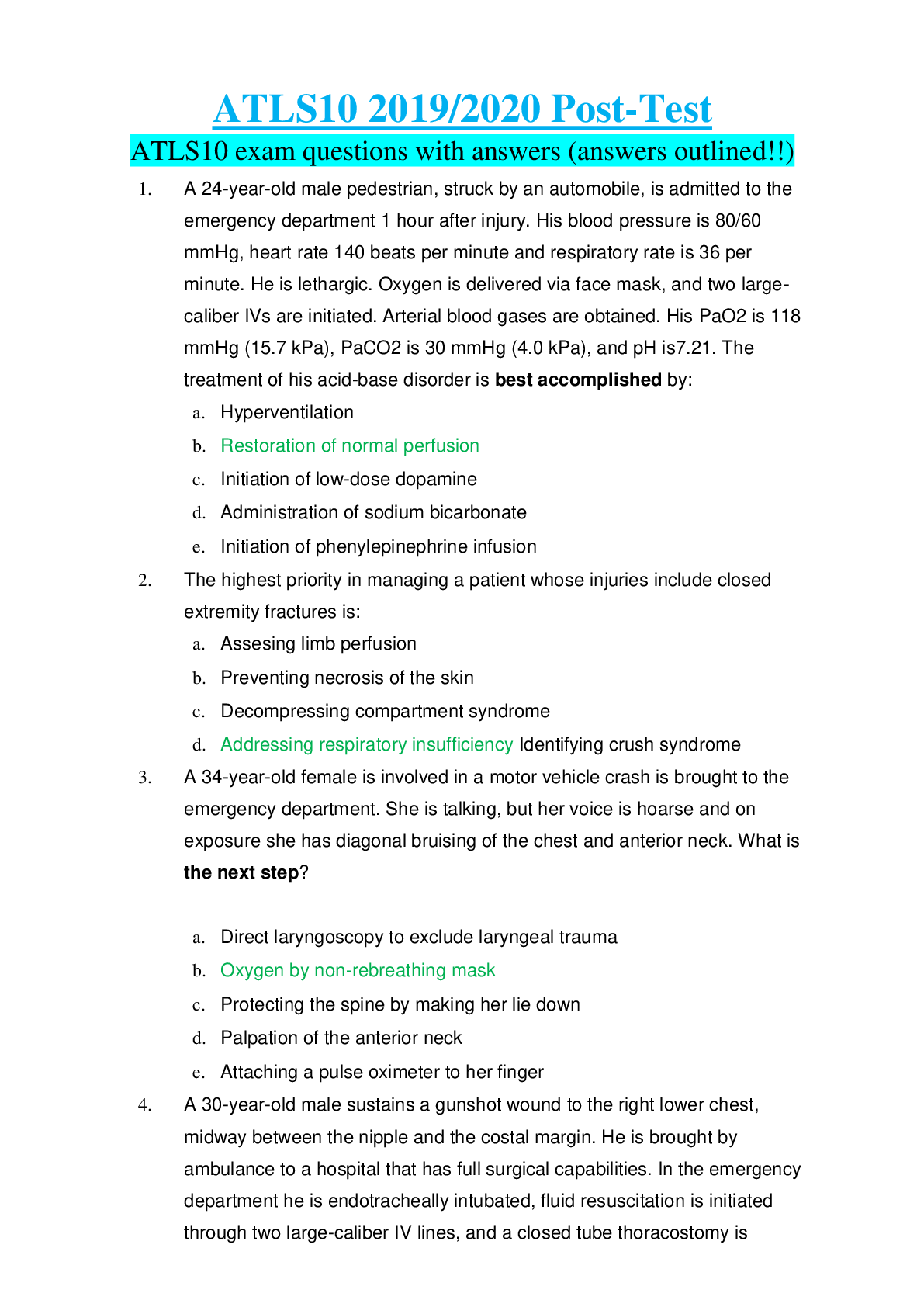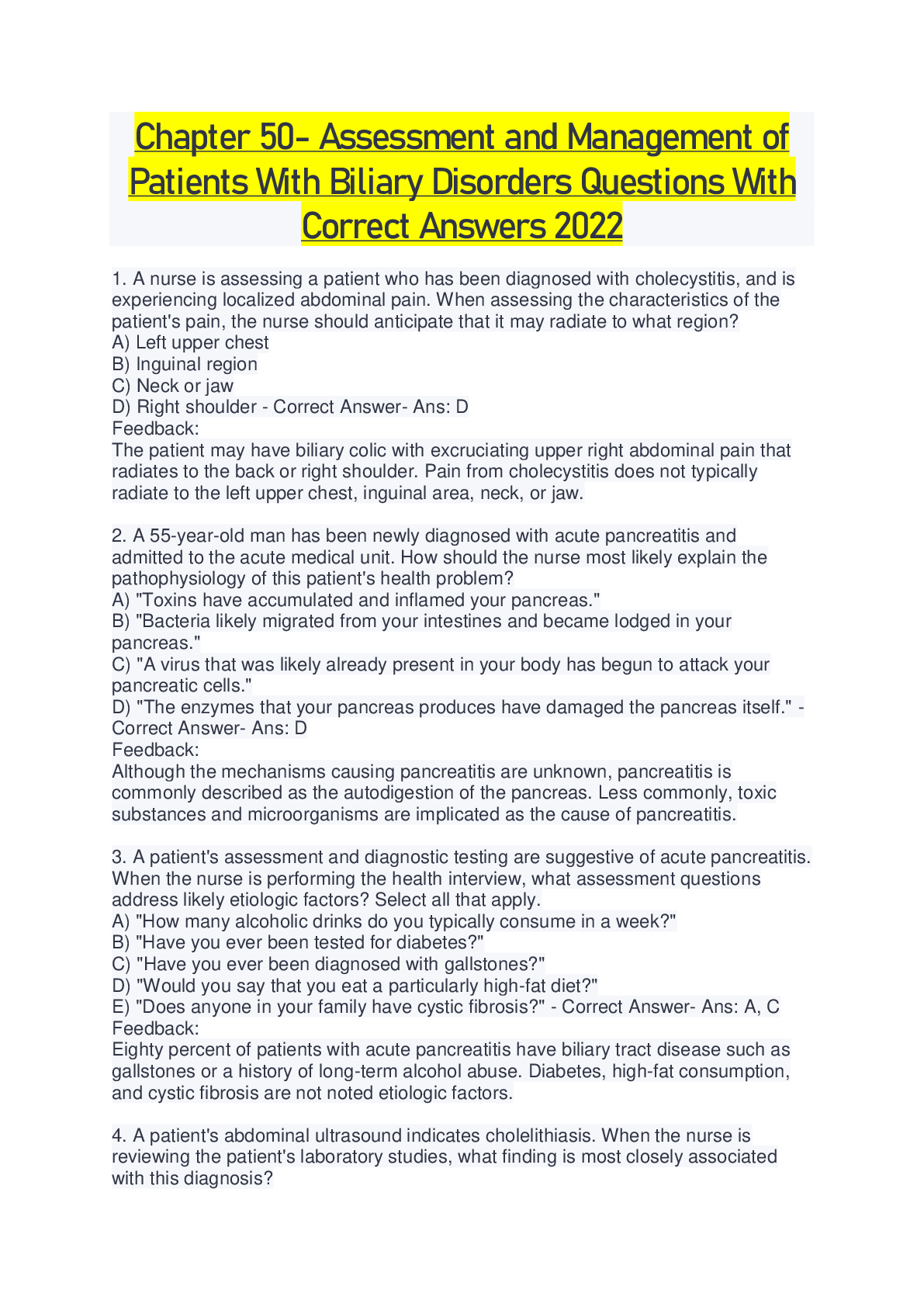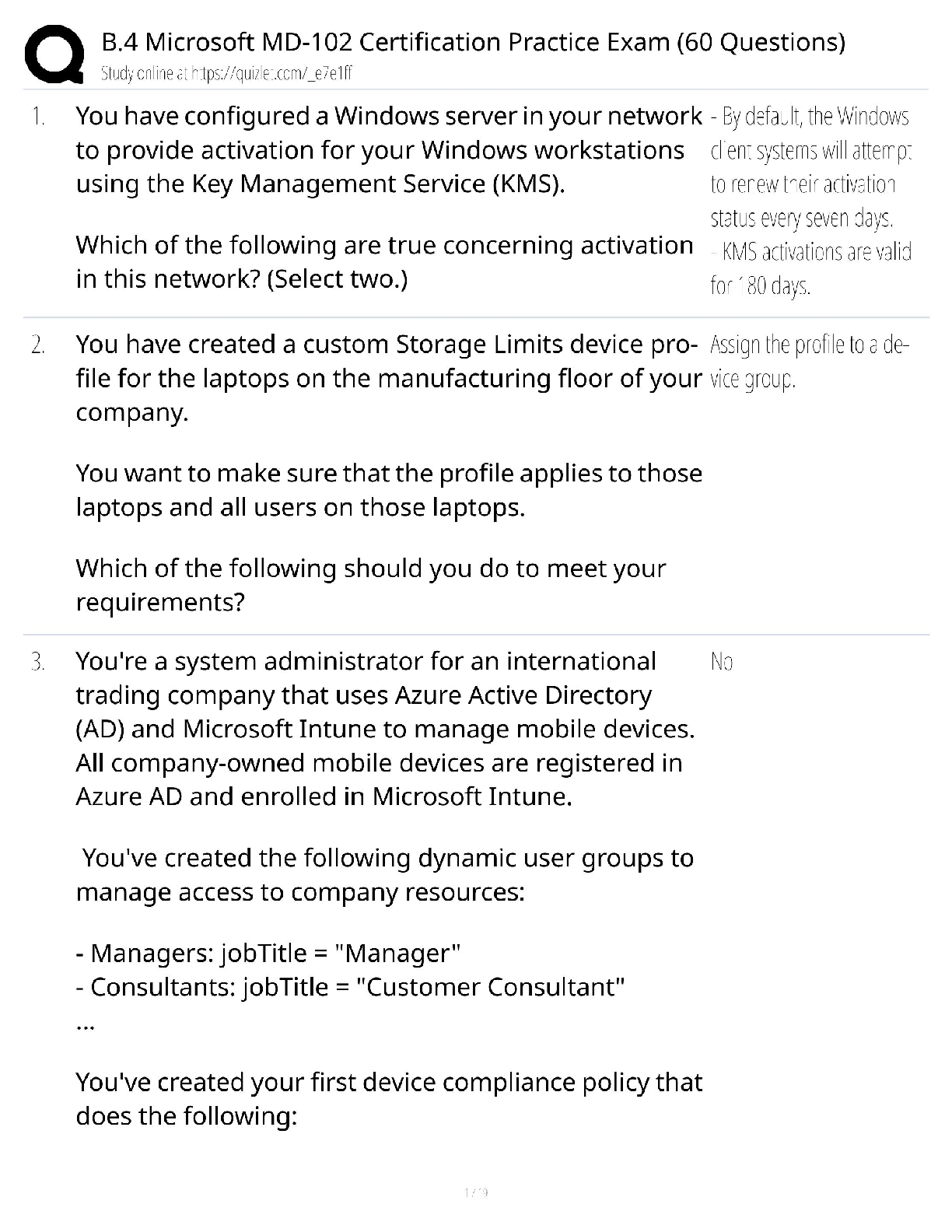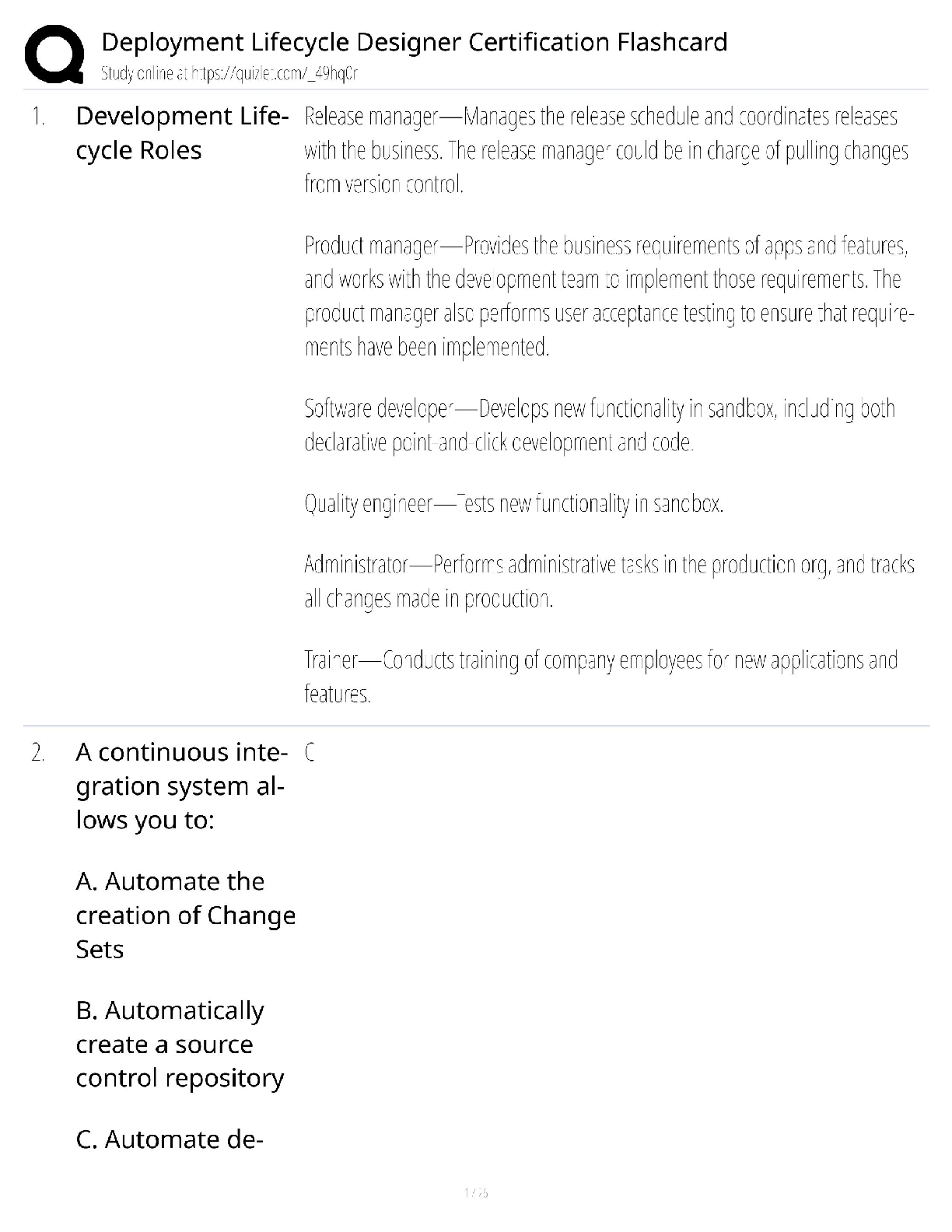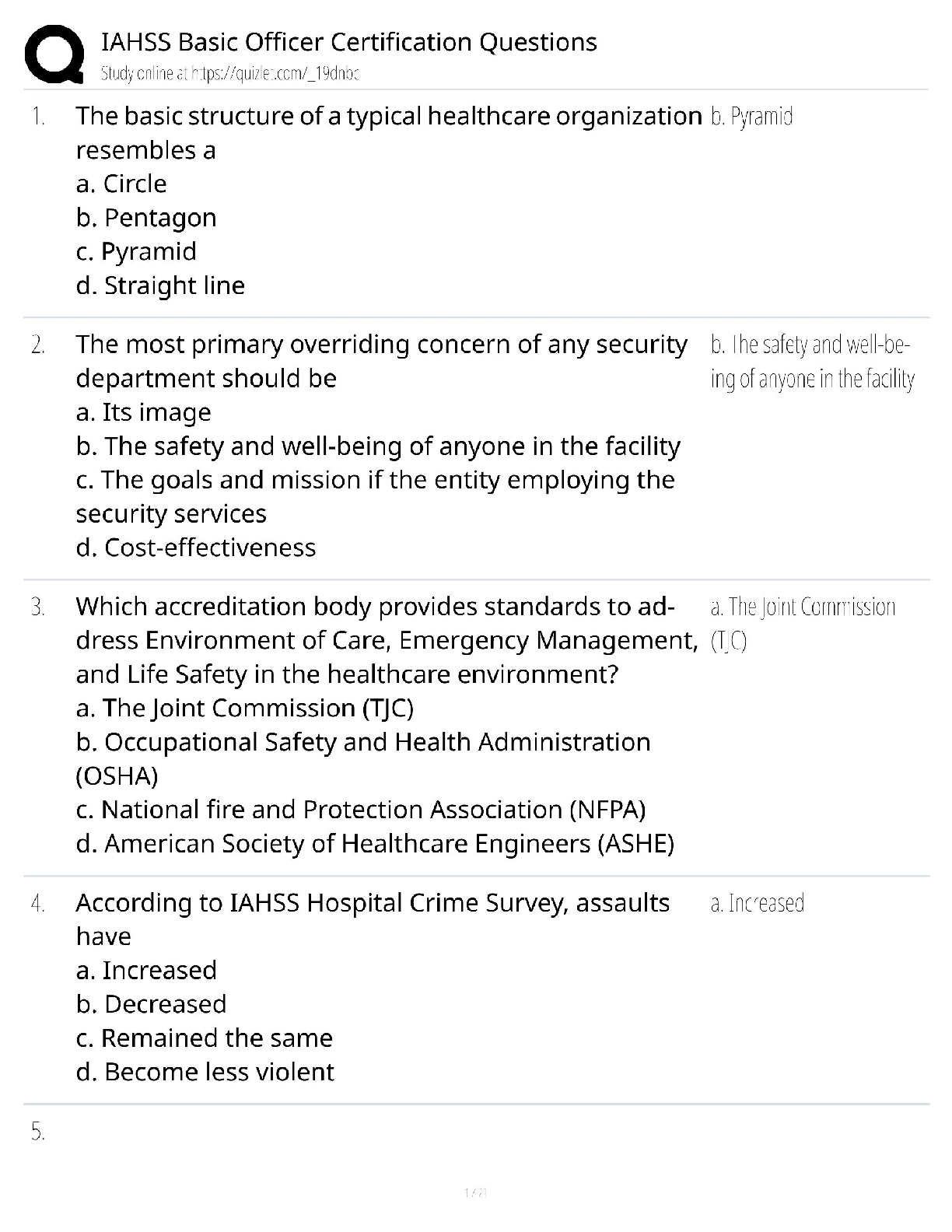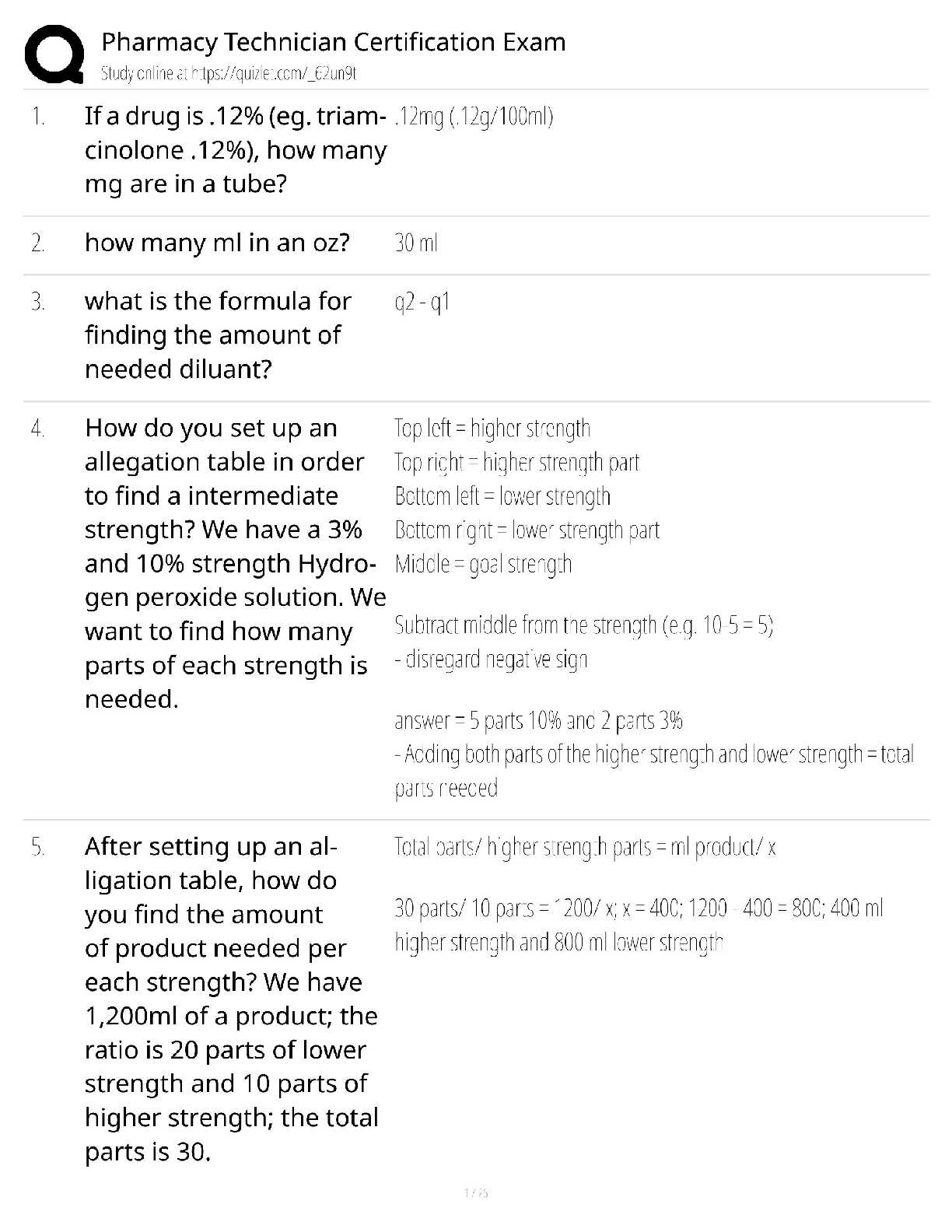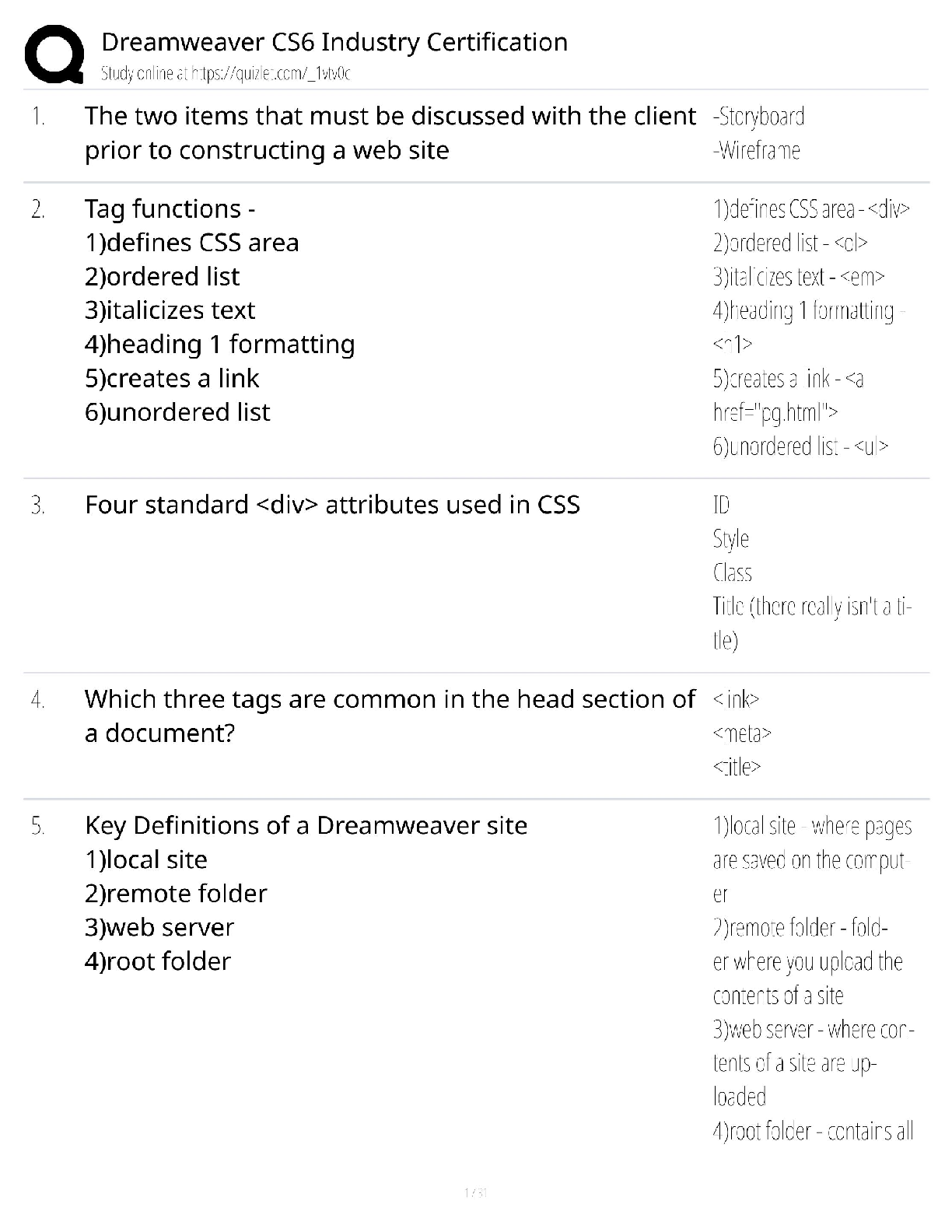Psychology > QUESTIONS & ANSWERS > AP Psychology Textbook Reading Assignment Unit 2 Biological Bases of Behavior Pages 98 - 106 Junior (All)
AP Psychology Textbook Reading Assignment Unit 2 Biological Bases of Behavior Pages 98 - 106 Junior Year Semester 1 2022 - 2023 School Year
Document Content and Description Below
AP Psychology Textbook Reading Assignment Unit 2 Biological Bases of Behavior Pages 98 - 106 Junior Year Semester 1 2022 - 2023 School Year Lesion - ANS-Tissue destruction. A brain lesion is a nat ... urally or experimentally caused destruction of brain tissue. EEG (Electroencephalogram) - ANS-An amplified recording of the waves of electrical activity sweeping across the brain's surface. These waves are measured by electrodes places on the scalp. MEG(Magnetoencephalography) - ANS-A brain imaging technique that measures magnetic fields from the brain's natural electrical activity. CT Scan (Computed Tomography) - ANS-A series of X-ray photographs taken from different angles and combined by computer into a composite representation of a slice of the brain's structure. (Also called CAT scan.) PET Scan (Positron Emission Tomography - ANS-A visual display of brain activity that detects where a radioactive form of glucose goes while the brain performs a given task. MRI (Magnetic Resonance Imaging) - ANS-A technique that uses magnetic fields and radio waves to produce computer-generated images of soft tissue. MRI scans show brain anatomy. fMRI (Functional MRI) - ANS-A technique for revealing blood flow and, therefore, brain activity by comparing successive MRI scans. fMRI scans show brain function as well as structure. Brainstem - ANS-The oldest part and central core of the brain, beginning where the spinal cord swells as it enters the skull; the brainstem is responsible for automatic survival functions. Medulla - ANS-The base of the brainstem; controls heartbeat and breathing. Thalamus - ANS-The brain's sensory control center, located on top of the brainstem; it directs messages to the sensory receiving areas in the cortex and transmits replies to the cerebellum. Reticular Formation - ANS-A nerve network that travels through the brainstem into the thalamus and plays an important role in controlling arousal. Cerebellum - ANS-The "little brain" at the rear of the brainstem, functions include processing sensory input, coordinating movement output and balance, and enabling nonverbal learning and memory. Limbic System - ANS-Neural system located below the cerebral hemispheres; associated with emotions and drives. CONTINUES... [Show More]
Last updated: 3 years ago
Preview 1 out of 2 pages

Buy this document to get the full access instantly
Instant Download Access after purchase
Buy NowInstant download
We Accept:

Reviews( 0 )
$8.00
Can't find what you want? Try our AI powered Search
Document information
Connected school, study & course
About the document
Uploaded On
Oct 29, 2022
Number of pages
2
Written in
All
Additional information
This document has been written for:
Uploaded
Oct 29, 2022
Downloads
0
Views
83

